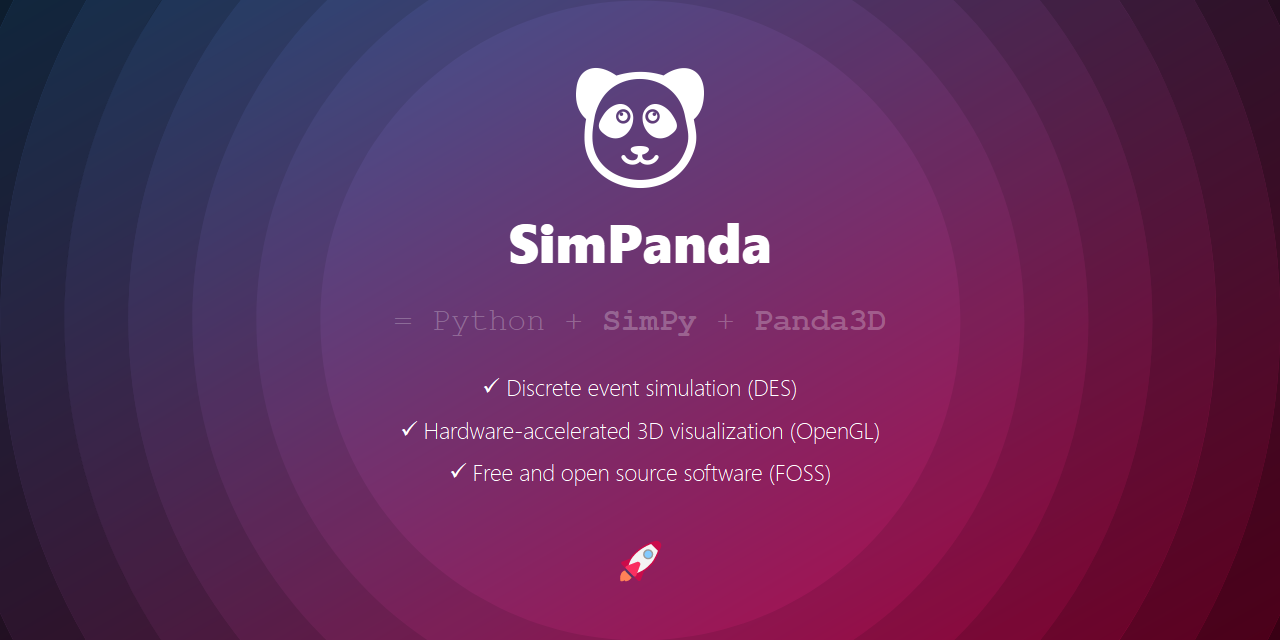This project contains boilerplate code for combined discrete event simulation (DES) and hardware-accelerated 3D visualization with ...
- the Python programming language,
- the SimPy discrete event simulation library, and
- the Panda3D visulization framework.
We use the boilerplate code at the School of Engineering of the University of Applied Sciences Upper Austria in courses on computer simulation and digital factory.
The following example shows how to use the simpanda package for building discrete event simulations with 3D visualizations:
from simpanda import Container
from simpanda import cube
# Create container including simulation environment and visualization window
container = Container(sim_time_to_real_time_ratio=1)
# Create red cube geometry and attach it to visualization window
cube(1, 0, 0).reparentTo(container.app.render)
# Start simulation and visualization threads
container.run(sim_time_duration=10)The following screenshot shows a sample output of the simpanda discrete event simulation and 3D visualization package:
Before getting startet with simpanda, you need to install SimPy and Panda3D into your local Python environment using pip.
SimPy provides discrete event simulation capabilities for Python programs. Here is the bash command for installing SimPy into your local Python environment:
pip install simpyPanda3D provides hardware-accelerated 3D visualization capabilities for Python programs. Here is the bash command for installing Panda3D into your local Python environment:
pip install panda3dHere are some more documents to read before starting to use simpanda for your discrete event simulation and 3D visualization projects:

